Dr. Gary Rollefson, anthropologist and recent National Endowment for the Humanities (NEH) Fellow at ACOR, writes below about his ongoing research in the desolate Black Desert of eastern Jordan.
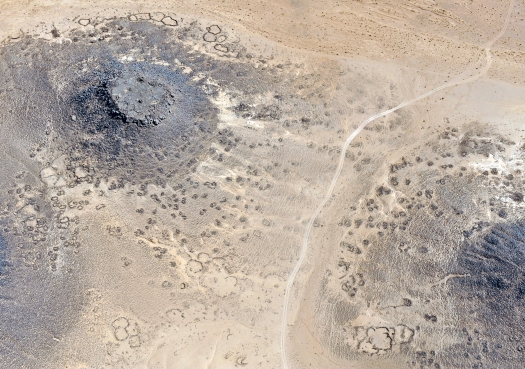
In 1980, Alison Betts, a doctoral student at the time, invited me to Jordan’s Black Desert to see what her research area looked like. After climbing to the summit of Maitland’s Mesa in the Wadi al-Qattafi, I was witness to the broad gloom—a consequence of divine punishment on the people who had dared to build the structures that now lay in utter ruin. I carried that image of desolation with me through the next three decades, certain that attempts to tame the lava-covered territory had been a fool’s dream that rightfully failed. How wrong that impression was!
Since 2008, the work of the Eastern Badia Archaeological Project has been investigating the surprisingly compact distribution of more than 500 stone buildings around the basalt-capped mesas of the Wadi al-Qattafi at the southwestern edge of the Black Desert (Fig.1) and the dense spread of hundreds of tombs, houses, and animal pens at Wisad Pools, 60 kilometers away at the southeastern margin of the Black Desert (Fig. 2).

Our excavation sample is small so far, but it appears that most of the residential structures might date to the middle and late 7th millennium BC, although many might also date from even 500 years earlier. Radiocarbon dates from the four structures we’ve excavated span the period from 6,600 to 5,400 BC. The houses are built of basalt slabs in an oval or circular form and appear to represent a major investment of labor (some stones weigh more than a ton), indicating that while the inhabitants may not have occupied the buildings all year long, they intended to return on a seasonal basis for extended periods of time. Four or five major occupational phases characterize most of the houses (at least, of the 7th millennium), each phase perhaps separated by periods of extended drought. The single structure dating to 5400 BC was relatively small (3 x 1.8 m) and witnessed only two occupational phases, perhaps just before or just after a prolonged period of low rainfall.
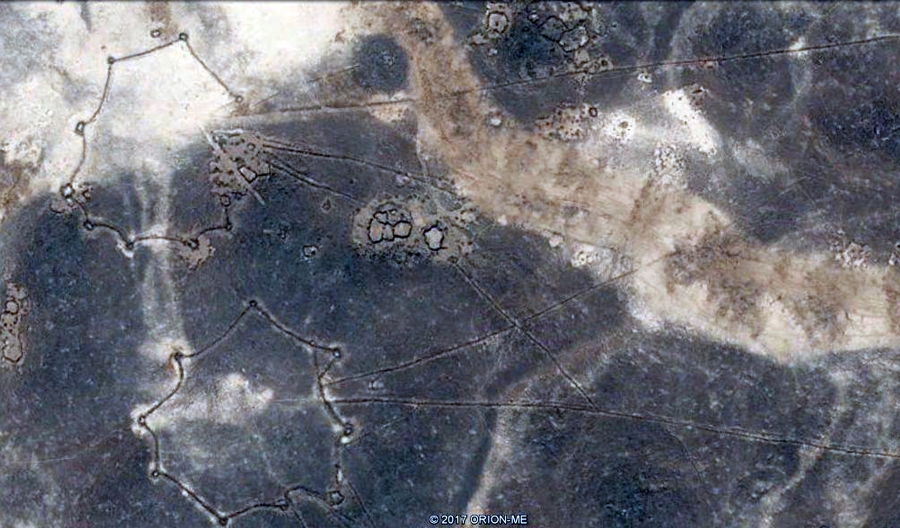
The number of structures in the Wadi al-Qattafi and at Wisad Pools (and at several other locations in the Black Desert) indicates that these particular locales offered predictably stable resources. The residents of these areas herded flocks of domesticated sheep and goats, probably as much for the dairy products they provided as for anything else. Meat was easily obtainable by hunting wild species in the area, especially gazelle; it now seems likely that large hunting traps called “kites” (Fig. 3) were used in mass slaughters, producing not only a valuable source of food, but also the hides that may have been used for trade with farming communities in the Jordanian highlands to the west.
The identity of the hunter-herding groups in the Black Desert remains undetermined, but the predominance of information points to a large immigration into the area near the beginning of the 7th millennium BC, when the “megasites” such as ‘Ain Ghazal and Basta suffered collapses due to climate change and accumulated environmental degradation that made it impossible to support the thousands of people living in them.
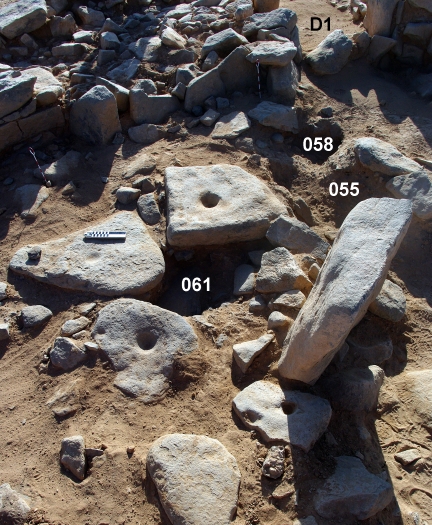
But the migrants didn’t enter the Stygian terrain that we see today. Rainfall was much higher during the 9th, 8th, 7th, and early 6th millennia (with occasional intervals of extended drought), so what is hyperarid desert today was then an extensive expanse of abundant vegetation and water. Excavations at Wisad Pools have shown that the mid-7th millennium houses were built atop a red permeable soil that absorbed the seasonal rainfall, preserving the moisture to enable very dense plant cover. Pollen from that soil has shown a marshy environment at Wisad Pools; pollen also indicated nearby stands of oak, supported by the presence of oak charcoal in fireplaces. Pollen of cattails/bulrushes also show that the people could have made baskets, mats, and perhaps woven roofing for the houses; reeds were probably also present, and the plants provided hollow shafts for arrows and darts as well as possible “timber” for roofing construction. The roots of cattails would have provided “bulrush flour” when dried and ground, and acorns could have added an important nutritional source after being ground and leached of the tannins in the nut (Fig. 4).
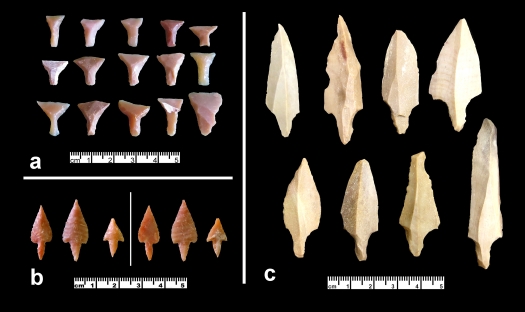
There appears to have been some cultural differentiation among the Black Desert Neolithic residents. At Wisad Pools, hunting relied on small transverse arrowheads, aptly called “flying razors,” whereas in the Wadi al-Qattafi this type was virtually absent; instead, local hunters used elaborately and intricately formed arrowheads such as Haparsa and Nizzanim points. Another point popular at Qattafi was a large and relatively heavy form known as a “Badia point”, which was probably used as a dart and cast using a spear thrower; a single Badia point was recovered from Wisad Pools (Fig. 5).
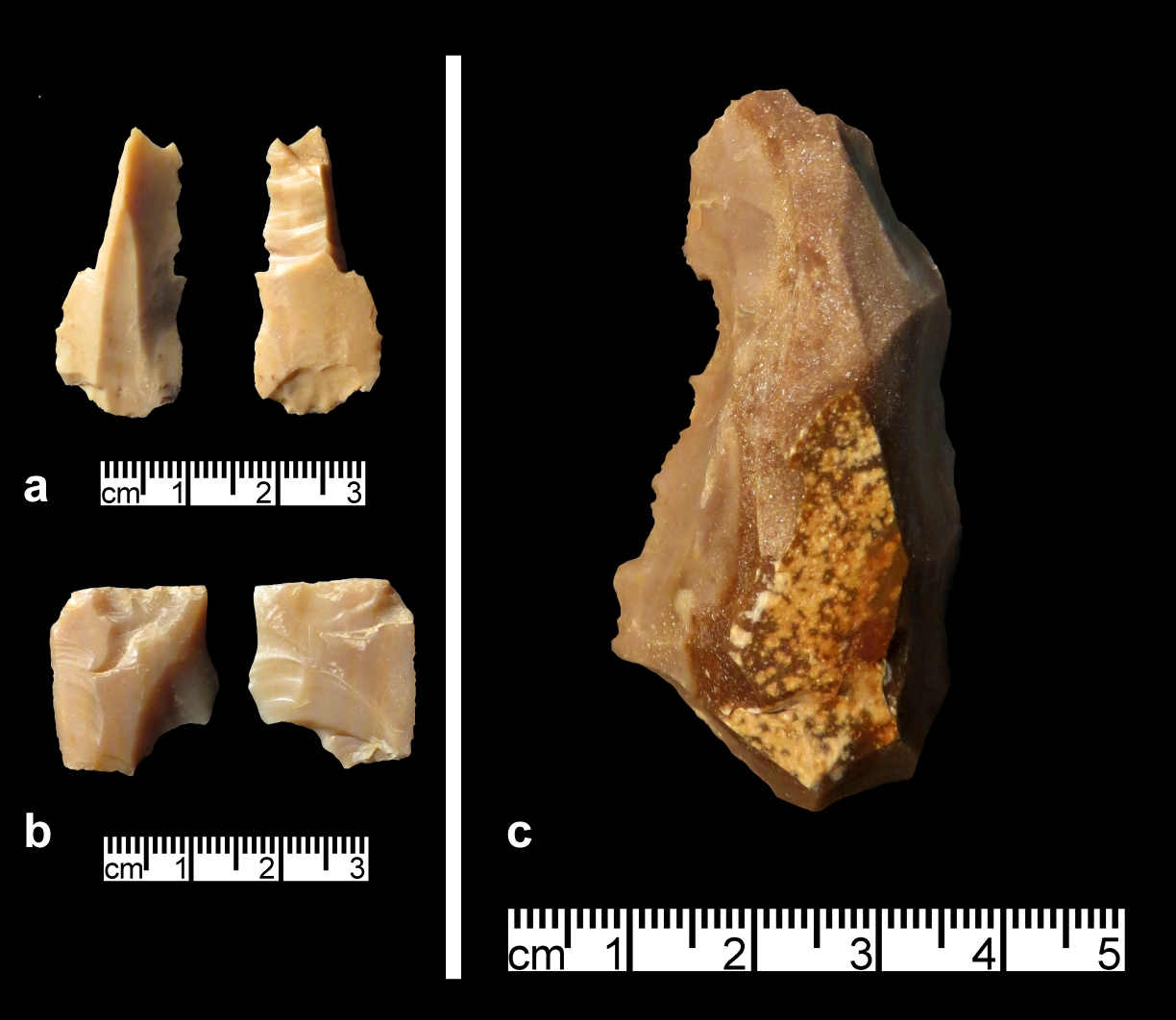
We have no pollen evidence from the Wadi al-Qattafi, and the charcoal in the fireplaces is almost all from local shrubs and bushes. Another indication that the landscape around Qattafi was different than at Wisad can be seen in a couple of tools types that may have been useful in woodworking. “Denticulate” flint tools have a series of adjacent “teeth” on their lateral edges that resemble saws in appearance and probable function; at Wisad they account for one-seventh of the tools, more than twice as important as in at Qattafi. “Wedges” (or “splintered pieces”) were flint flakes and blades probably used for splitting bone, but especially wood and reeds; 10% of the tools at Wisad are wedges, five times the amount in the Wadi al-Qattafi (Fig. 6).
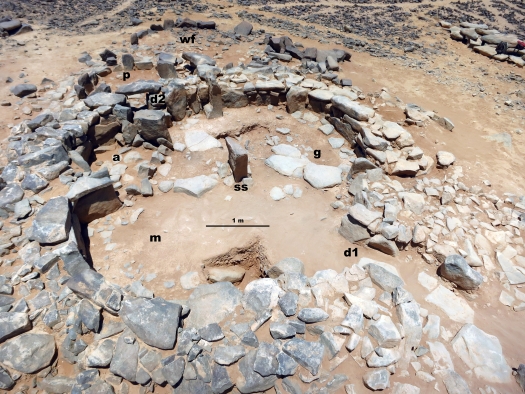
In terms of architecture, there are significant differences in size and arrangement. At Wisad, buildings are nearly circular and 4-6 m in diameter (Fig. 7). At Qattafi, there seems to be a single large circular structure surrounded by 4 to 7 smaller (c. 2.5 x 1.5 m) elliptical chambers that might be “sleeping quarters” (Fig. 8).
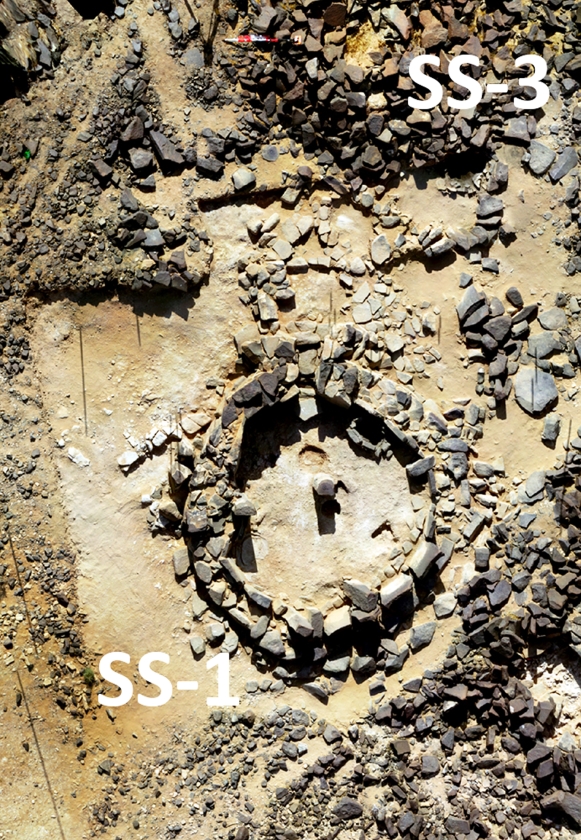
How different were these two populations? Did they speak the same language? Did they practice the same rituals and hold the same beliefs about the supernatural? Differences in stone tool techniques and types won’t answer questions like these, for exploiting the available resources in different environmental zones are more likely to explain differences in tool kits than some more fundamental cultural influences. The differences in buildings, on the other hand, are stronger indications of some differing traditions unrelated to environmental factors.

Dr. Gary Rollefson is an anthropologist, an archaeologist, and a scholar of the Neolithic Period in the Levant. He was the 2017 NEH Fellow at ACOR. His long academic career began in Jordan with ACOR almost 40 years ago. Gary Rollefson is an emeritus professor of Anthropology at Whitman College. He received his Ph.D. (1978) as well as his M.A. (1972) in Anthropology from the University of Arizona, Tucson and his B.A. (1965) in Anthropology from the University of California, Berkley. He has held many teaching and lecturing positions and boasts a long list of publications and fieldwork related to the archaeology of Jordan. Read more about Dr. Gary Rollefson.

